South Hobart Primary 5/6 A

Hello hello South Hobart Primary Grade 5/6s Class A!!
Thank you for your questions about climate change. You asked some really interesting questions about energy, animals, conservation, pollution and the future of our Earth.
You'll find answers to your questions from our climate experts below - have a read and watch their answers.
You can also have a look at what other classes across Tasmania asked this year, as well as our climate change toolkit.
Our Questions
Absolutely! And many countries already are. For example, Costa Rica's energy is nearly entirely from renewable sources. Over 99% of the energy in Costa Rica was generated from renewable energy. The majority of this energy, 67.5 percent, comes from hydropower. Additionally, wind power generates 17 percent, geothermal sources make up 13.5 percent and biomass and solar panels comprise 0.84 percent.
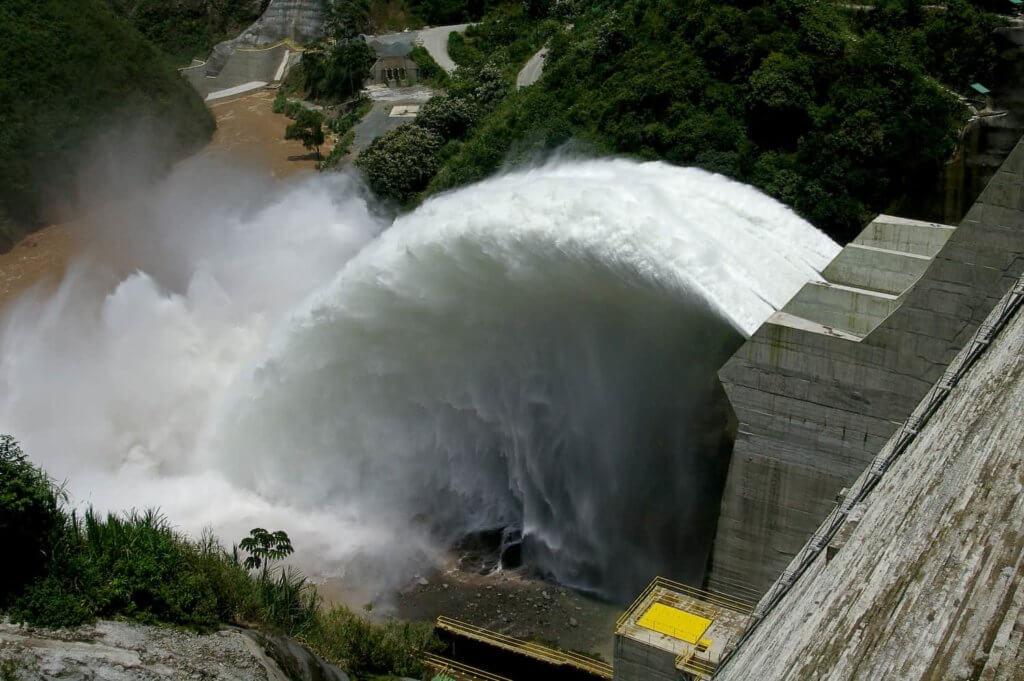
Costa Rica set the record in 2017 for most consecutive days with renewable energy, with 300 consecutive days on renewable energy alone. In 2018, Costa Rica’s new president, Carlos Alvarado, announced at his inauguration that he plans to ban all fossil fuels and become the world’s first decarbonized country.
Another interesting development in renewable energy has been the increase in renewable microgrids. Microgrids are local energy grids with control capabilities, that can work independently to produce and supply power to small communities.
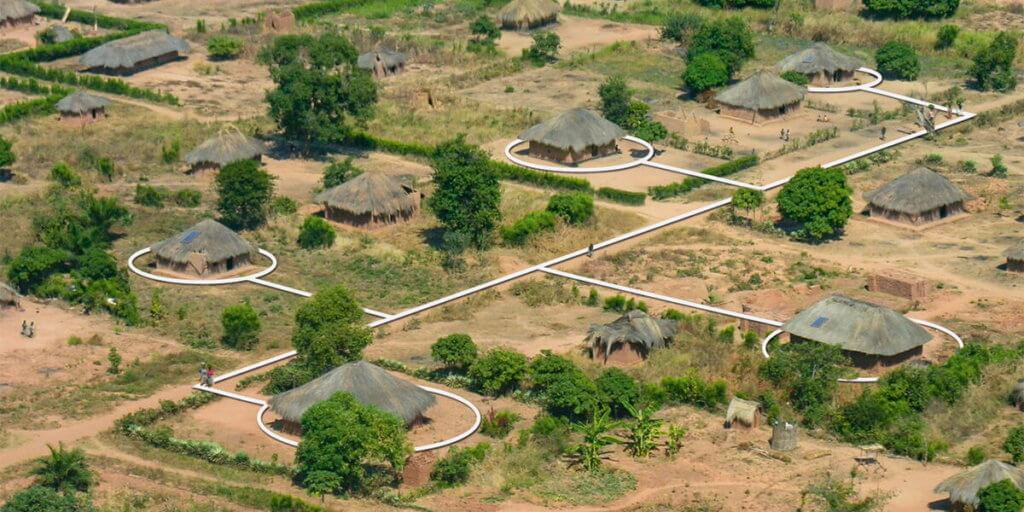
Solar minigrids in particular are being used in rural communities to replace diesel generators with renewable energy supplies. In the case of solar, a series of solar panels are all linked together to store the power in a shared battery and control room!
Other Sources:
https://ieeexplore.ieee.org/document/7991293
This is such a good question, as it shows you are thinking about that fact that all sources of energy, whether renewable or non-renewable (like fossil fuels) have some emissions associated with them.
We all know well that fossil fuels are a real problem because of the large amounts of greenhouse gases they emit when burned. We can turn to renewable energy as an alternative – things like solar, wind and hydro. However, these technologies also have some carbon emissions associated with them. For example, if we think of a wind turbine, while the power it generates is low carbon, it’s not zero carbon. Carbon dioxide emissions are generated throughout a wind turbine’s life cycle, from mining the raw materials to build it, to its manufacture, construction, maintenance and also decommissioning at the end of the turbine’s “life”.
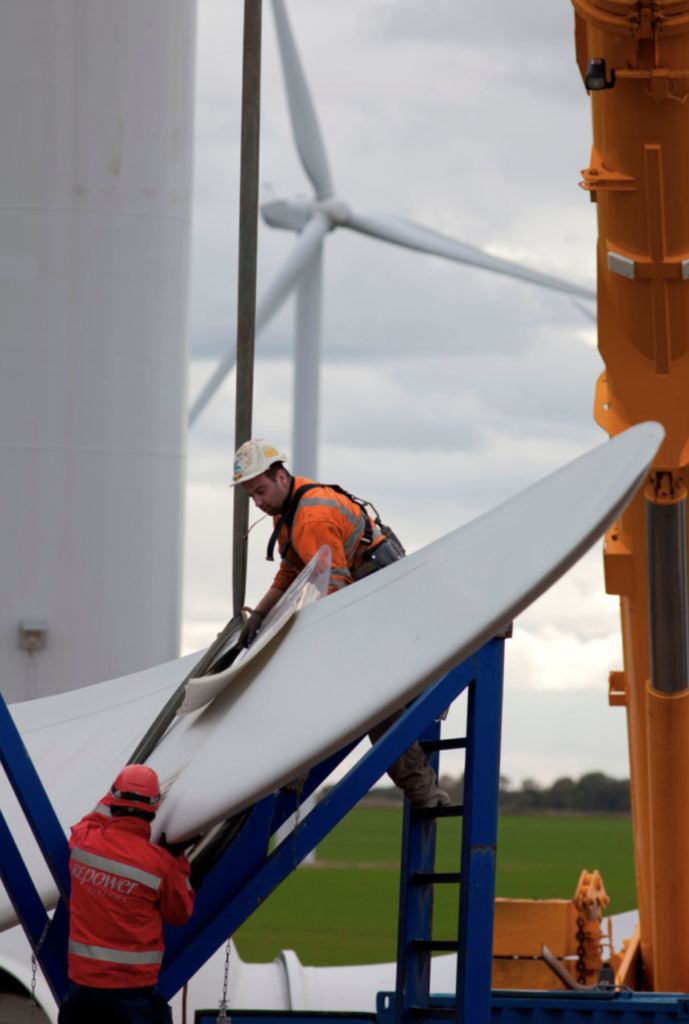
Did you know hydroelectric dams, particularly in tropical areas, can also have significant methane emissions associated with them, due to vegetation rotting under the dam’s water for several years after dams are first flooded? Methane is a powerful greenhouse gas, meaning that even hydroelectricity isn’t entirely “emissions free”.
Though no energy source is “perfect” in terms of carbon emissions, the carbon emissions associated with renewable energy sources over their life cycles are much, much lower than emissions from burning fossil fuels. In the near future, we may be able manufacture things like the steel for wind turbines not using fossil fuel but instead, using green hydrogen, making life cycle emissions of renewable energy sources even lower.
You asked about mitigating emissions from all energy sources: this is where the role of carbon sinks and offsets comes in. Even when we reach “net zero”, there will still be some emissions. Net zero means achieving an overall balance between greenhouse gas emissions produced, and greenhouse gas emissions taken out of the atmosphere, for example by trees and natural environments. When we are able to achieve that balance, then we will be doing really well – so that energy we consume in our daily lives won’t have a detrimental effect on our atmosphere and on the planet.
What an excellent and timely question: there has been a lot of discussion about nuclear power in the media recently. Also, Australia’s new plan to get to net zero emissions by 2050 does not rule out including nuclear power in this country’s future energy mix. So it’s an important time to be thinking and talking about nuclear.
Nuclear energy is used to generate electricity in 30 countries around the world, and provides about a tenth of the world’s energy needs. Nuclear power needs uranium, and the planet has uranium resources sufficient to fuel existing demand for more than 130 years. Nuclear power does not cause direct greenhouse gas emissions, which is good when we are thinking about climate change, however, the waste from nuclear power generation is problematic. It remains radioactive potentially for thousands of years and needs to be carefully stored under very controlled conditions in order not to pose a danger to humans and the environment.
Could Australia develop nuclear power? Currently the answer is no. That’s because Australian law currently prohibits the approval and construction of nuclear power plants and the enrichment of uranium needed for nuclear power. Could Australia develop nuclear power in the future as part of an effort to reduce greenhouse gas emissions? Australia does have a lot of uranium, in fact, it supplies about one third of the total world demand for uranium.
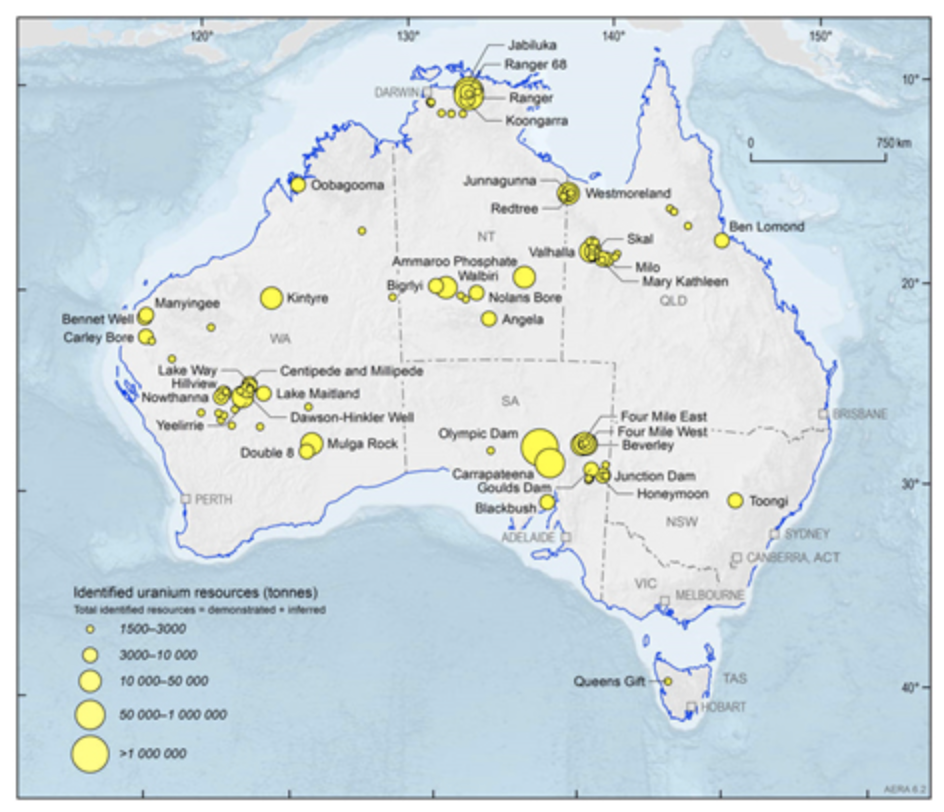
The problem with nuclear for Australia as part of the effort to reduce emissions this decade is quite simple: it’s too slow, and too expensive.
How is it too slow? The timeframe to build a nuclear power station is at least 10-12 years. If we started to build a nuclear power capacity in Australia right now (and remember, the law currently prohibits it) it would not be operational until the early-mid 2030s. Science tells us we need to cut emissions right now, this decade.
How is it too expensive? Despite our domestic reserves of uranium, nuclear is by far the most costly energy for Australia to generate, as you can see from the illustration below.

Comparison of power generation technology cost estimates. Source: CSIRO Gen Cost 2019-2020
If we were to build nuclear power capacity in Australia, starting today, the cost of renewables like wind and solar would be much less even than it is today by the time we were able to generate any nuclear power.
So we might pursue building nuclear power in Australia if we had no other alternatives, but we are lucky to have some of the most plentiful solar, wind and particularly offshore wind resources in the world. So renewables like wind and solar, backed up by hydroelectricity, batteries, and new fuels like green hydrogen, will be a faster and cheaper way to decarbonise than turning to nuclear power.
Our world would be very different without the Industrial Revolution. It has been so impactful that historians refer to the time before it as the Early Modern Era and the time since the 18th Century as the Modern Era. Make no mistake, these eras are very different. Before the Industrial Revolution most people lived in the countryside. Because of the Industrial Revolution jobs, resources, money, and people became centralised in cities, which had been much smaller beforehand. Much of what we take for granted is partly because of the Industrial Revolution. Modern governments, police forces, property and renting, education systems, jobs types and more would look very different if it had not happened. In other words, our social systems have been strongly influenced by the fossil fuel economies built because of the Industrial Revolution.
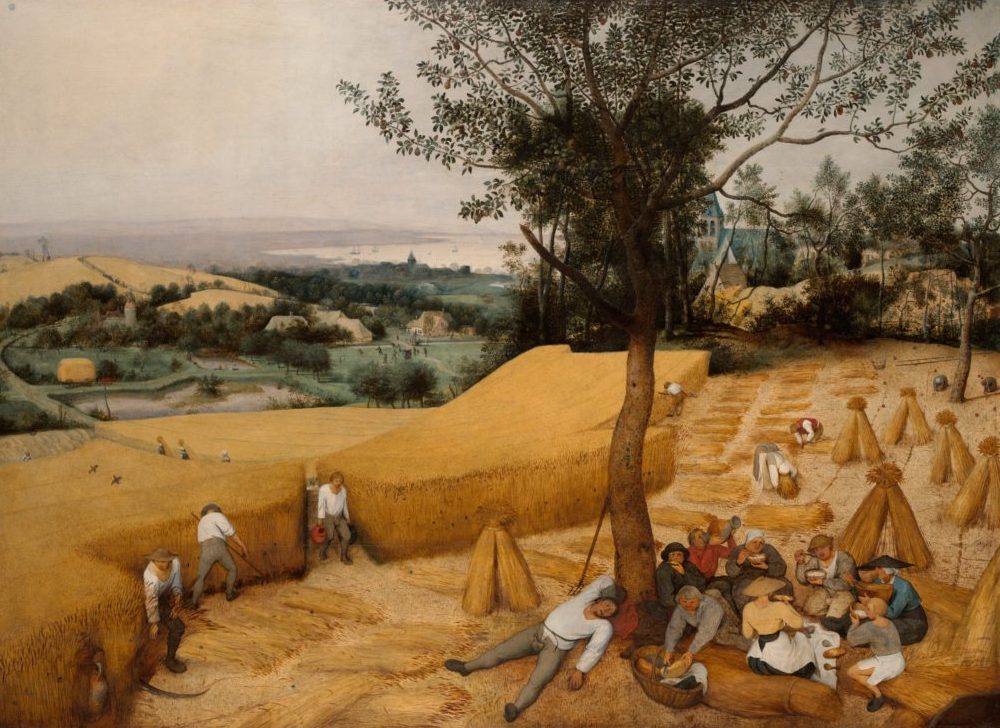
This is also the case for modern technology and life in general. Cars, planes, modern medicine, electricity, indoor plumbing, shopping malls and supermarkets, we take all these things for granted. This is what makes action on climate change so difficult. The Industrial Revolution has created our modern lives as well as climate change. We can acknowledge how the Industrial Revolution has made our lives better. But we should also acknowledge how it has caused air and water pollution, more diseases, C02 and other greenhouse gas emissions, bad working conditions for many, and more advanced weapons and dangerous conflicts. It also has not unfolded equally or fairly for everyone.
But we do not need to choose between a carbon-heavy industrialised and non-industrialised life. We can change our societies and economies, just like they were changed to make the Industrial Revolution, and we can focus on what we want to do differently. By decarbonising our economies we will no longer rely on fuel and energy that cause climate change. Pollution that runs into the soil and water can be filtered. The amount of damage we do to the environment can be drastically reduced, and if we change not just our economies but also our societies, we can even work to regenerating the environment as well. It will just take us a lot of work - a real transformation of our current society - to get there.
Stopping, or reducing climate change, known as mitigation, is something that is really important so I’m very glad you’ve asked how to do this.
Reducing climate change will involve lowering the level of greenhouse gases in the atmosphere. This means reducing the emission of heat-trapping greenhouse gases. This is done by reducing the use of fossil fuels and moving to renewable energy sources, like wind, solar and ocean wave energy instead. The effectiveness of these energy sources is improving all the time and around the world (especially in Australia) they are becoming a major source of energy already. Increasing efficiency and finding ways of reducing energy use and waste is also very important. Around the world businesses and governments are making commitments to reduce the use of fossil fuels and to transform manufacturing, food production and transport (e.g. trucks, cars, trains and shipping) to electricity or other fuels (like hydrogen).
Another way to help mitigate climate change is to support processes that actively remove carbon out of the atmosphere. Healthy oceans, forests and soil are great carbon stores. This means restoring and protecting these environments and supporting sustainable practices will help. Growing trees is a great way of helping remove carbon from the atmosphere. This effect is so large that the natural regrowth of Tasmania’s forests means that the state is currently a carbon sink – meaning more carbon is removed from the atmosphere than is emitted. This means as a state Tasmania is doing better than the net zero emissions target governments around the world are talking about.
Rather than just letting the trees do all the heavily lifting though we can help Australia and the world by reducing our individual emissions. On a personal level that means turning lights and appliances off when you’re not using them; putting on a jumper rather than turning the heating up to full; and walking, cycling, or using public transport if we can. Also finding out about what you eat and changing to options that contribute less to climate change can also help. Agriculture is a major producer of greenhouse gases so look for low carbon meals, such as sustainable seafood and local seasonal foods, and try having at least a couple of red meat free days a week.
In addition to reducing energy use we can also consume less (e.g. use clothes for longer rather than chasing the latest fashion look), increase recycling and appropriately dispose of organic waste (e.g. food scraps). Methane is a powerful greenhouse gas, over twenty years it is about 80 times more potent at warming than carbon dioxide. When food and garden waste is buried with general garbage the microbes and chemical processes that break the waste down cannot easily access oxygen and so they produce a lot of methane (known as anaerobic breakdown). However, if you put the organic waste into a compost bin (at home or one provided by the council) the microbes can access oxygen and so they use a process that produces much less methane (known as aerobic breakdown). The nutrient rich compost that results also means more plants can be grown (absorbing carbon) and less energy is needed to make artificial fertiliser. A win-win-win.
The biggest thing you can do to help climate change is to stay informed, to help share useful information and to think about your actions – each little bit really does help. Around the world innovations and action by young people is helping accelerate action to reduce climate change.
For starters, you might like to find out how Tasmania’s tree growth is helping our carbon budget. NASA also has a great page on climate change, which mentions some solutions. The United Nations also has some high-level information on different activities around the world.
You might also like to play with the simple climate model at en-Roads, explore options for reducing climate change
Climate change can affect populations of animals in lots of ways.
Breeding – it can affect the way they breed every year. For example, Emperor penguins breed on the sea ice, in areas that are stable and don’t change from year to year. They lay their eggs on the ice and hatch the chicks and look after them until they are old enough to swim. But the areas of ice they breed on are being affected by climate change. Some areas of ice have shrunk, or broken up, destroying colonies that have bred in those areas for thousands of years. Some colonies are losing their special breeding areas and the number of chicks making it to adulthood is shrinking every year. Some breeding colonies no longer exist, because the sea ice they once used to raise their chicks is now gone. Over time this will slowly reduce the total number of Emperor penguins as there will be less new chicks coming into the population every year. Some colonies are ok and are not affected yet, but may be at risk in future.
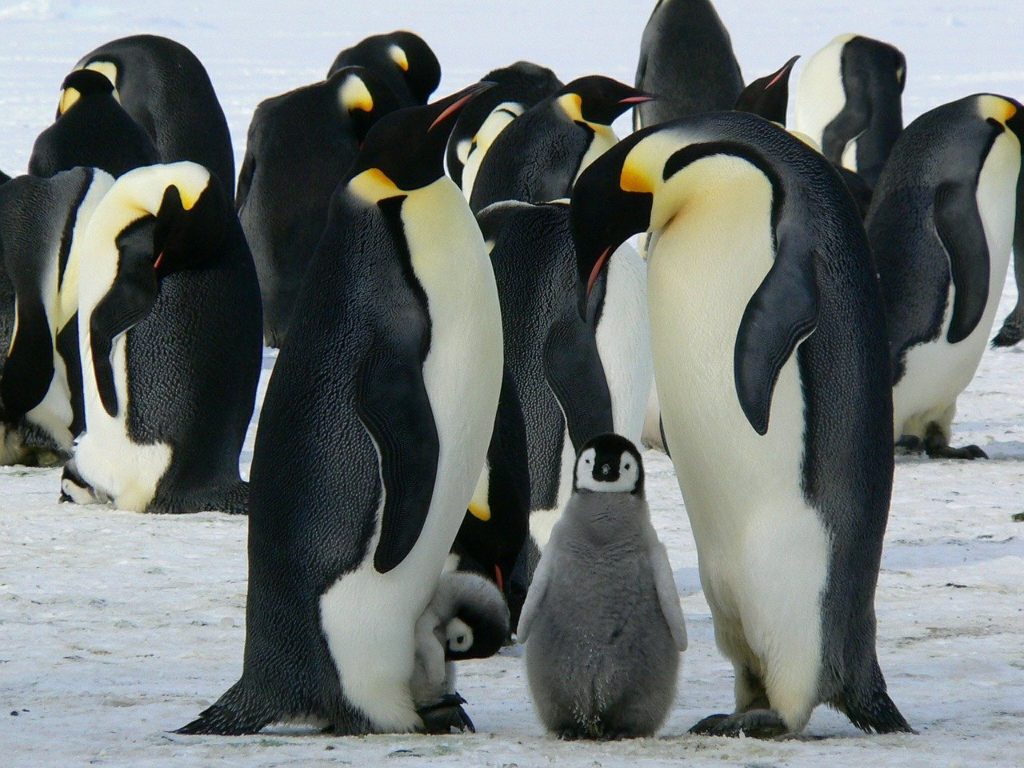
Competition – Some populations of animals may be affected by competition for space or food as climate change affects their habitats. Populations of animals that live on the sea floor in the dark areas under sea ice, where there is not enough light for seaweed to grow, may have to compete with seaweed for space as the amount of sea ice changes. With less sea ice there is more light that reaches the sea floor, which is good for seaweed but bad for the animals that live in these areas. Seaweed can grow very quickly once it is established, crowding out animals such as sponges and corals – outcompeting them for space. This could result in a loss of biodiversity in these areas as lots of animals populations are replaced by seaweed.
Ocean acidification – This is the process that occurs as more carbon dioxide is absorbed by seawater. It makes it slightly more acidic each year which can affect animals in lots of ways. One way is by affecting those animals which make shells out of calcium carbonate. Ocean acidification makes it harder for them to make their shell, and eventually it could mean their shells start to dissolve. This is already happening to a planktonic animal called a sea-butterfly, or pteropods. These beautiful little animals have very thin fragile shells. Climate change through ocean acidification is causing their shells to be smaller and weaker. This might mean they have to put more time and energy into making their shells, which could mean less energy for reproduction. It could eventually cause them to die before they can reproduce, meaning that their populations will shrink. This could have serious effects on the food web in Antarctic seas, as pteropods are important food for lots of other animals like fish, penguins and even whales.
Thanks for asking about whether there are positives from climate change. What a great question! Climate change is posing real challenges for people and for nature but not everything is negative everywhere. The most obvious changes in nature include our findings that plants and animals are moving into areas where those particular species have not been before. This is because areas further away from the equator are becoming warmer and allowing tropical and subtropical animals to move into temperate areas, and those in temperate areas to move into polar areas. In fact, polar regions in the Arctic and Antarctica are “greening” with the arrival of larger plants.
A good example of animal arrivals in Tasmania is that Yellowtail Kingfish can be caught off the east coast of Tasmania throughout more of the year than in the past. A citizen science project, Redmap, lets fishers log their unusual catches so that scientists can find out about these species on the move! Also, over the last 20 years, the long spine (dark blue/black) sea urchin has arrived from southern New South Wales to become very important in rocky reef systems around Tasmania. These changes have occurred because climate change is causing changes in ocean circulation and the East Australia Current has been penetrating Tasmanian waters further and for longer throughout the year than in the past.

Understanding whether these changes in distribution of animals and plants is a good thing or not depends on the effects those species have in their new environment. For example, Yellowtail Kingfish live in open water parts of the ocean that have a specific temperature range. Moving to a new open water place does not change much for the tuna or the life around it. However, the sea urchins for example live on the sea floor and are moving into areas where there are other species that already live there. These other species, like abalone or rock lobster, are negatively affected by the urchin as the urchin devours large amounts of algae and causes change in the rocky reef habitat.
How can a sea urchin move from New South Wales to Tasmania if it lives on the sea floor? Most animals and plants in the ocean have two phases in their life cycle – a larval phase (like a tadpole) and the adult phase. Sea urchin larvae can survive in the surface of the ocean for many weeks before they settle to the sea floor. So, larvae from sea urchins in NSW can travel on the East Australia Current and then settle in Tasmania.
You could read more about how species are responding to climate change here: https://theconversation.com/climate-driven-species-on-the-move-are-changing-almost-everything-74752
So, there are a few pieces to this:
- First an important premise: Only ice that currently sits on land would contribute to increasing sea levels. Sea ice, which forms by freezing of sea water at high latitudes, does not change sea level. So to answer your question we must look at land ice alone.
- What counts as land ice, and how much sea level does it correspond to? Land ice is found in (i) the grounded parts of the two major ice sheets on Earth, Greenland and Antarctica, (ii) a few smaller ice caps (like Svalbard), and (iii) mountain glaciers. If the Greenland Ice Sheet melted, scientists estimate that sea level would rise about 6 meters. If the Antarctic Ice Sheet melted, sea level would rise by about 60 meters. If all the mountain glaciers on Earth melted, sea level would rise by about 40 cm. In total, this adds up to approx 66.4 m.
- How much land would be left if all this land ice melted? Well, all the land that is approx. 65 m above sea level nowadays. You can go check on Google Earth or similar what that means for the place where you live. Can you find out what would be above this level? When you do this, just bear in mind that even if all this ice were to melt (which we do not know it will), certainly it would not happen in our lifetime, and most likely for several centuries. What’s important to realize though is that the impact this could have is huge for all people living on Earth, so we should do all we possibly can to avoid making climate warmer and our land ice melt.













